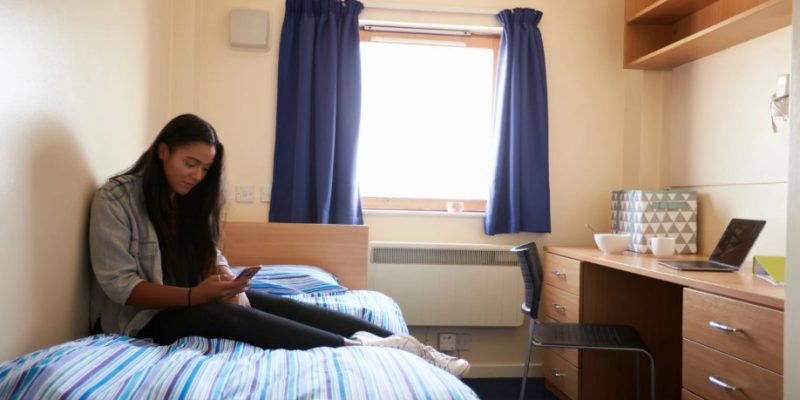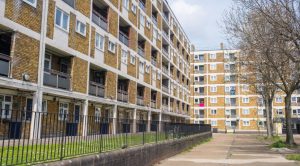
How Long Can the Council Keep You in Temporary Accommodation in the UK?
Understanding how long the council can keep you in temporary accommodation is essential if you’re facing homelessness in the UK. Local authorities have a legal duty to provide safe and suitable housing while they assess your situation and work towards a permanent solution.
However, the duration and conditions of temporary housing can vary significantly depending on your circumstances and local housing availability. This guide explains your rights, what to expect, and how to challenge decisions that may affect your housing stability.
What Is Temporary Accommodation?

Temporary accommodation is short-term housing arranged by a local council for individuals or families who are experiencing homelessness or are at immediate risk of losing their home.
It acts as a stop-gap measure, giving people a roof over their heads while their situation is assessed and more permanent housing options are explored.
This form of housing is not designed for long-term living. Instead, it ensures that people in crisis have a safe place to stay while the council determines their eligibility for longer-term housing under homelessness legislation.
Temporary accommodation can take various forms, depending on what is available and suitable for the individual’s or family’s needs. It may include:
- Rooms in shared houses or hostels
- Self-contained flats or houses leased from private landlords
- Council or housing association-owned short-term tenancies
- Supported housing for those with specific needs
The aim is to prevent people from rough sleeping or staying in unsafe environments. For families, especially those with young children, the council should strive to provide self-contained housing so they do not have to share kitchens or bathrooms with others.
The accommodation should also be large enough to meet the household’s needs, including space for infants and any specific medical or accessibility requirements.
When Does the Council Provide Temporary Accommodation?
The council provides temporary accommodation when someone applies for housing help due to homelessness or an imminent threat of homelessness.
This support is offered under duties outlined in the Housing Act 1996, with amendments introduced by the Homelessness Reduction Act 2017.
Temporary accommodation is usually offered at one of two stages:
- Emergency accommodation during initial assessment: If it appears that someone is eligible, homeless, and in priority need, the council must offer emergency housing while they investigate the situation further. This can be arranged very quickly, often the same day an application is made.
- Accommodation under the main housing duty: If the council concludes that the applicant meets all legal criteria—including being unintentionally homeless and in priority need—they are placed in temporary accommodation until a suitable offer of long-term housing becomes available. This stage can last weeks, months, or even longer, depending on the availability of permanent housing.
Applicants who are pregnant, have dependent children, are fleeing domestic abuse, or have certain health conditions are more likely to be considered in priority need. The council must also consider vulnerability due to age, mental health, physical disability, or risk of exploitation.
During this time, the council continues working to find a long-term solution that matches the applicant’s housing requirements. While doing so, the temporary accommodation must remain suitable for the entire length of the stay.
If a person’s circumstances change, such as a deterioration in health or loss of income, the council has a duty to reassess the suitability of the current housing.
In cases where applicants have limited recourse to public funds, or where their immigration status restricts access to housing benefits, the council’s responsibilities may vary.
However, they must still ensure that the placement is safe and reasonable under the circumstances.
Who Is Eligible for Temporary Housing Support from the Council?

Eligibility for temporary housing is determined based on the criteria laid out in the Housing Act 1996.
The council will assess the applicant’s circumstances, including their legal and residential status, and whether they meet priority need conditions.
An applicant is generally considered eligible if:
- They are legally homeless or at risk of becoming homeless within 56 days
- They are in a priority need category, such as being pregnant, having dependent children, or being vulnerable due to age, disability, or risk of harm
- Their homelessness is not intentional (i.e., not caused by their own actions)
- They have a local connection to the area, such as work, family, or previous residence
- Their immigration status allows access to public funds
In cases where individuals have recently arrived in the UK (within two years), councils are only required to provide temporary accommodation that is safe and not excessively far from any essential caring responsibilities.
How Long Can You Legally Stay in Temporary Housing?
There is no fixed legal time limit on how long someone can remain in temporary accommodation.
The duration varies depending on multiple factors including the applicant’s priority status, availability of suitable long-term housing, and the council’s resource constraints.
Some applicants are offered permanent housing in a matter of weeks, while others may stay in temporary accommodation for several months or even years. This is particularly common in urban areas where housing demand significantly outweighs supply.
Councils must continue to provide temporary housing as long as the main housing duty applies and until a suitable final offer is made.
Factors Affecting Duration in Temporary Accommodation
| Factor | Influence on Duration |
| Availability of social housing | Longer waits in areas with limited stock |
| Household composition | Larger families may face longer delays |
| Medical or accessibility needs | May limit housing options, extending wait times |
| Local connection or relocation | May impact placement and availability |
| Review or appeal processes | May delay permanent offers |
What Types of Temporary Accommodation Might the Council Offer?

The type of temporary accommodation provided can vary significantly depending on local housing supply, funding, and the applicant’s specific needs.
Common forms of temporary housing include:
- Shared accommodation in a house with other homeless applicants
- Privately rented properties leased by the council for short-term use
- Hostels or supported housing schemes, especially for vulnerable individuals
- Short-term tenancies with the council or housing associations
Families with children are generally entitled to self-contained accommodation. This means they should not be required to share facilities such as kitchens or bathrooms with others. The council should also ensure that space is adequate for all members of the household, including the provision of cots for children under two if needed.
Where Can the Council Place You in Temporary Housing?
By law, councils are encouraged to house individuals in their own borough wherever possible. However, due to a shortage of suitable housing, they may offer placements in neighbouring areas or even further afield.
When making placements, councils are required to consider:
- Proximity to the applicant’s workplace
- Children’s current schools and the impact of disruption
- Ongoing care responsibilities or reliance on local support networks
- Medical appointments or services being accessed locally
- Safety concerns, including risk from domestic abuse or harassment
The placement must still be deemed suitable. If a person is moved far from these necessary connections without proper justification, they may be able to challenge the decision.
What Happens If the Temporary Housing Is Unsuitable?
Councils must ensure temporary accommodation remains suitable for the duration of a person’s stay. If circumstances change or the accommodation does not meet required standards, it is possible to request a review.
Unsuitability might involve:
- Lack of space, especially for larger families
- Unsafe living conditions (e.g. damp, broken heating)
- Inaccessibility for disabled residents
- Unaffordable rent or service charges not covered by benefits
- Excessive distance from vital services or responsibilities
Applicants have 21 days to request a suitability review. During this time, it is often recommended to accept the accommodation to avoid being considered as refusing help. Councils must continue to ensure that the housing remains appropriate based on ongoing or newly emerging needs.
Can the Council Ask You to Leave Temporary Accommodation?
The council may end temporary housing arrangements under a few conditions:
- The applicant has been offered permanent accommodation under the main duty
- A transfer to a different temporary housing arrangement is necessary
- The person has refused a suitable offer of permanent housing
- There are breaches of tenancy terms, such as rent arrears or antisocial behaviour
- The person no longer qualifies due to changes in immigration status or eligibility
In most cases, particularly where the applicant has a tenancy or licence agreement, formal notice is required, and eviction typically involves going through the courts.
However, in hostel accommodation where meals are provided or facilities like bathrooms are shared, the process may not require court intervention.
Reasons the Council Might End Temporary Housing
| Reason | Details |
| Suitable final offer is made | Ends the council’s main housing duty |
| Property required for another use | Applicant may be relocated to similar housing |
| Breach of tenancy or licence | Includes rent arrears, nuisance, or refusing offers |
| Loss of eligibility | Immigration status or change in household circumstances |
How Can You Challenge a Council Decision About Temporary Housing?
If the council decides to end temporary housing or makes a housing offer that appears unsuitable, the applicant has the right to ask for a review. This is known as a section 202 review under the Housing Act.
Applicants can request a review of:
- The suitability of temporary accommodation
- A decision that the main housing duty has ended
- A declaration that they are intentionally homeless
- A refusal to accept a new homelessness application
A request must be made within 21 days of the decision being communicated. Legal assistance is often available through housing solicitors or advice centres, especially if there’s risk of immediate homelessness.
If a review is requested, the council may decide to continue providing accommodation while the process is underway, particularly if there is a significant risk of harm or hardship.
What Financial Help Is Available While Living in Temporary Housing?
Temporary housing must be affordable. To help cover the cost, people in temporary accommodation may be eligible for:
- Housing Benefit, if renting from the council or a housing association
- Universal Credit (housing element), for those in private sector placements
Sometimes, these benefits do not cover the full cost of rent or service charges. In such cases, a Discretionary Housing Payment (DHP) can be applied for through the local council to cover shortfalls.
Applicants should be aware that:
- Some service charges may not be covered by any benefit
- Housing costs in temporary accommodation are often higher than standard social housing
Councils must ensure that the accommodation remains affordable for the household for the entire duration of the placement.
Who Is Responsible for Repairs in Temporary Housing?

In temporary accommodation, the landlord (which may be the council, a housing association, or a private landlord) is usually responsible for essential repairs. This includes:
- Structural repairs
- Faulty heating systems
- Plumbing and sanitation
- Ensuring electrical and gas safety
Tenants are generally expected to handle minor upkeep such as changing light bulbs or replacing fuses. They are also responsible for any damage caused by misuse or negligence.
If landlords fail to carry out necessary repairs, the tenant can escalate the issue to the council’s housing department or environmental health team for further action.
What Should You Do If You’re Facing Homelessness Again?
If someone becomes homeless again after leaving temporary accommodation or has reason to believe they’re at risk of becoming homeless, they can submit another homelessness application to the council.
Situations that may lead to reapplication include:
- A breakdown in a new tenancy
- Family eviction or relationship breakdown
- Refusal of a previous housing offer due to unforeseen issues
If nothing has changed since the last application, the council might refuse to reopen the case. However, a different local council might accept the application if the applicant can demonstrate a local connection to that area.
It’s important to respond quickly to any letters or notices from the council and seek help from housing advisors or legal services if needed.
Conclusion
There’s no fixed limit to how long someone can stay in temporary accommodation in the UK.
It can be a few weeks or stretch into several years depending on your priority status, housing availability, and local council policy. However, your temporary housing must always be suitable, safe, and affordable for the duration of your stay.
Understanding your rights, knowing how to challenge decisions, and seeking proper support can help you navigate this often complex process.
Don’t hesitate to access legal help if you’re unsure about the council’s decisions or if you feel your needs are not being met.
FAQs
Can you refuse temporary accommodation from the council?
Yes, but doing so may result in losing your right to housing assistance. It’s advised to accept the offer and request a review if the accommodation is unsuitable.
How long is the average stay in emergency housing in the UK?
Stays can range from a few weeks to over a year depending on local housing stock and your housing priority.
What happens if temporary housing is not suitable?
You can request a suitability review within 21 days and may be eligible for legal help during the process.
Does the council have to provide housing during a review?
Not always, but they must consider your circumstances and the risk of homelessness if housing is withdrawn during the review period.
Can I choose where I live in temporary accommodation?
You can state preferences, especially related to work, children’s education, or safety. The council must consider them but can still place you outside your chosen area.
Is temporary housing always self-contained for families?
Not always, but councils must aim to provide self-contained units for families with children whenever possible.
Can I apply for temporary accommodation again if I become homeless?
Yes. You can make another homeless application if your situation changes or if you’re still homeless.





